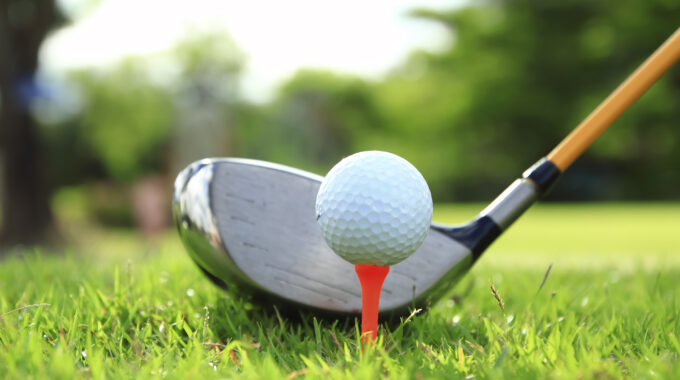If you already need a break from this fall's distance learning, you might hit up…

Common Golf Injuries: What to Do In These 5 Scenarios
Golf and injuries don’t mix. Just ask Fred Couples, whose career has been interrupted time and again by a bad back. Or Tiger Woods, who David Feherty said may never return to the PGA tour due to multiple injuries to his knee and back over the years. If you golf, you may be playing with an injury, and not playing very well as a result.
Hall of Fame Golf writer Dan Jenkins once penned a sports tome entitled “You Gotta Play Hurt,” but when it comes to golf injuries, you don’t have to endure it. Here are five common golf injuries and what you can do about them so you can return to walking the fairways again.
Back Pain
Estimates say that 75 to 85 percent of Americans will experience some form of back pain in their lifetimes, according to a Golfchannel.com article (I did my back workout on the Roman chair shortly before sitting down to write this), and golf is the culprit for causing a lot of it. The twisting rotation of the swing and torque involved in trying to swing for those extra 10 yards can cause pain and injury and become detrimental to a smooth, powerful, and repeatable swing. If you can avoid back surgery, it is highly recommended, but rehab exercise can be a great help (I know). The key to prevention is stretching exercises for your back, but also core strengthening to help heal and prevent relapse.
Knee Pain
I have jokingly claimed that I was like Tiger since we’ve both had five knee surgeries and back problems (of course, he has 14 major wins to my zero and a lot more revenue earned from golf than I do), but the knee injuries can certainly affect a swing. Twisting over the left knee (for right-handed golfers) is difficult for a player who has had cartilage or ligament problems. I subconsciously protected my knee for years while playing and it eroded my swing. Knee injuries should be treated so that the pain doesn’t affect a smooth swing. See a doctor for treatment, but stretching beforehand and icing of inflamed joints after the fact are also good for quick recovery. There are plenty of leg lifts and strengthening exercises to help prevent further injury.
Elbow Tendonitis
I spent part of one offseason in physical therapy for tendonitis in both elbows (which I am certain was caused by the improper swing motion due to compensating for my back and knees — yeah, I know, my body is a wreck). Elbow tendonitis is an inflammation of the elbow ligaments — irritation of the outer tendon is called “tennis elbow” and if it’s the inner tendon, it is a golfer’s elbow — but golfers more frequently suffer from tennis elbow. A period of rest and massage was followed by stretching and strengthening exercises that returned me to pain-free golf. But an improvement of my swing mechanics is recommended for it not to return.
Rotator Cuff
Like most golf injuries, the rotator cuff malady is a result of overuse or traumatic force as a result of a bad swing. It manifests itself as pain in the upper arm or shoulder and can be acute after you have played a round or when raising your arms above your head. Untreated, the injury can result in tendinitis, bursitis, and tears in the rotator cuff. Treatment can be found with anti-inflammatory drugs, or, in severe cases, with surgery to the injured area. But, as in most golf injuries, strength and conditioning exercises can help with the pain and help prevent future injury.
I am pleased to report that I don’t have any rotator cuff problems as a result of playing golf . . . at least not yet.
Sunburn
And then there is sunburn, the most common of all golf injuries. We all have probably experienced it when we forgot the sun block or ran out and didn’t apply enough. It is not the kind of thing that will prevent your next round (it just may delay it), but if you don’t pay attention to doing something about it, bigger problems such as skin damage or even skin cancer could be in your future.
Prevention is a no-brainer. You have heard about it since you were a kid. Get some sunscreen — SPF 15 or higher — and put it on before and during a round. Wear a hat — hat hair is not as bad a look as sunburned skin or worse. And get some sunglasses or protective clothing. Preventing this one is completely on you.



